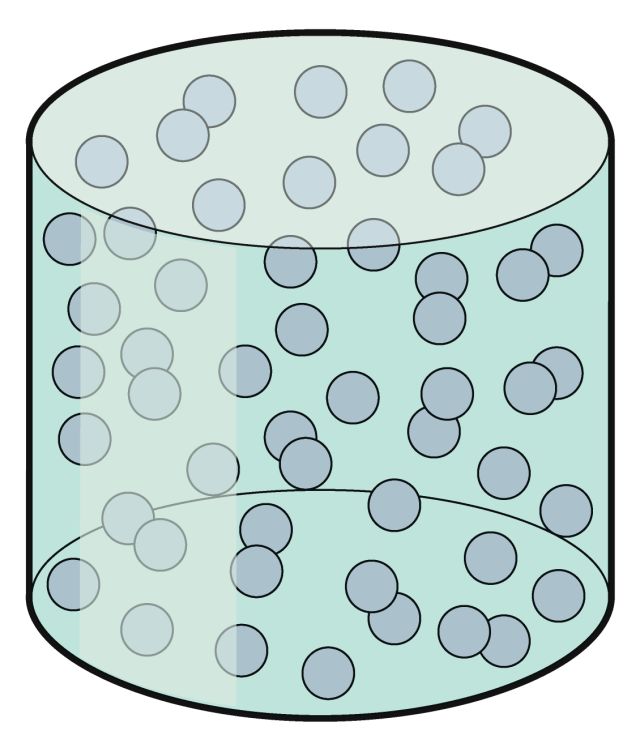States of matter
Matter is any substance that occupies physical space.
The kinetic theory of matter sates that matter is made of tiny particles i.e. atoms/molecules that are always in constant motion
There are three states of matter that you need to be aware of:

Solid.
Solids are one of the three states of matter, along with liquids and gases. The particles in solids are tightly packed together, and they vibrate in place. This means that solids have a fixed shape and volume, and are difficult to compress.
The strong bonds between the particles in a solid make it difficult to separate them. This is why solids are difficult to break apart - the particles cannot move away from each other easily. In fact, some solids are so tightly packed that they are virtually unbreakable, like diamonds.

Liquid.
Liquids are one of the three states of matter, along with solids and gases. The particles in liquids are close together, but they are not as tightly packed as those in solids. The bonds between the particles in liquids are weaker than those in solids, which allows the particles to move past one another.
This ability of the particles to move past one another is what allows liquids to flow and be poured. When a liquid is poured, the particles slide past each other and take the shape of the container that the liquid is poured into.

Gas.
Gases are one of the three states of matter, along with solids and liquids. The particles in gases are very far apart from each other, and there are basically zero forces of attraction between them. This means that the particles in a gas can move past one another very easily.
Another important characteristic of gases is that they are highly compressible. This means that their particles can easily be pushed closer together. When a gas is compressed, the volume that it occupies decreases, because the particles are closer together. This is what allows gases to be stored in containers, like tanks or cylinders.
The compressibility of gases is due to the fact that the particles are so far apart from each other. When pressure is applied to a gas, the particles are forced closer together, which results in a decrease in volume. This is why gases are often used in applications like air conditioning, where they can be compressed and then expanded to lower the temperature of a space.
